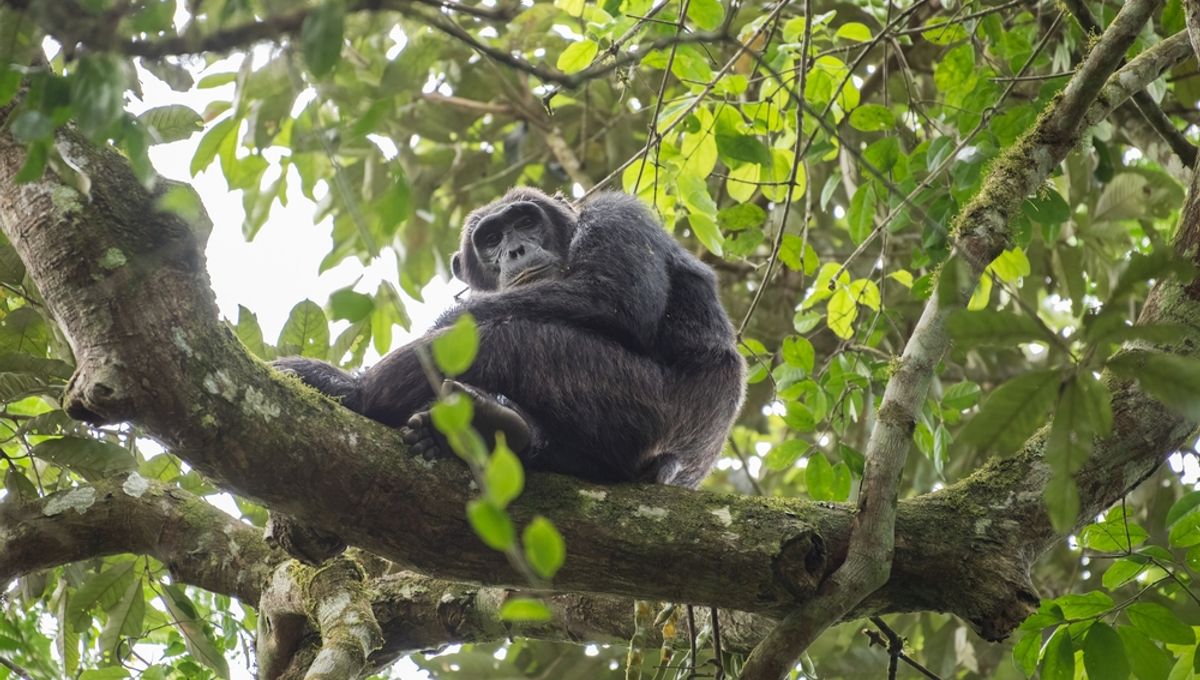
In the depths of the Congo Rainforest, it’s said that a population of savage giant apes rules supreme. Known as the Bondo ape or Bili ape, murky accounts of these creatures suggest they walk on two feet, stand the size of a grown man, and nest on the ground like gorillas. So the tales go, they are ferociously aggressive and have picked up a reputation for being lion-killers. Some have argued they are a totally new species of great ape, while others contend they are a hybrid of gorillas and chimpanzees.
Shocking reports about the Bondo ape have been circulating for several decades. While it’s clear that something interesting is going on with the great apes of the Congolese rainforest, it looks like many of the reports have been overstated and sensationalized. Like many tales of this kind, the story of the Bili ape is likely to be a blend of both fact and fiction.
One of the first scientific efforts to track down the mystery ape was made by Karl Ammann, a Swiss Kenyan photographer and conservationist, in 1996. He reportedly came across a number of skulls held at the Royal Museum for Central Africa in Belgium that had been collected by Belgian colonizers near the town of Bili in the northern Democratic Republic of Congo (DRC), about 200 kilometers (124 miles) east of the Ebola river.
The skulls featured a prominent “mohawk” ridge down the center just like a gorilla and, as such, were classified as gorillas. But something was off. Other aspects of the skull’s shape and size were more comparable to a chimp, plus there were no known gorilla populations living in the region where they were collected.
Suspecting he might be on the cusp of a new discovery, Ammann ventured to the northern reaches of the DRC. Here, he spoke to local hunters who told him about sightings of giant apes who killed lions and were seemingly immune to poisonous darts. Creepily, these strange beasts were also said to howl at the full moon. He also bought photographs from locals, showing bewildered people posing with the hulking bodies of massive apes they had hunted.
Although his mission managed to document some extremely large chimp poop and casts of footprints larger than a gorilla’s, there was no conclusive proof of the Bili ape.
Another quest to identify the mystery ape came in the summers of 2002 and 2003. One of the researchers on the expedition was Dr Shelly Williams, who purportedly returned from the trip to the DRC and gave interviews to the media. This resulted in a number of mainstream publications like CNN, the Associated Press, and National Geographic reporting sensational articles about the Bondo chimp.
“The larger animal had a much flatter face and straight-across brow like gorillas and turned gray early in life […] Two or three would nest on the ground, with others low in nearby branches. They made a distinct vocalization like a howl and were louder when the full moon rose and set […] The apes, she argues, could be a new species unknown to science, a new subspecies of chimpanzee or a hybrid of the gorilla and the chimp,” TIME reported in 2003.
However, in the following years, doubt was thrown onto these bold claims. A few years later, primatologist Dr Cleve Hicks and his team observed what were believed to be Bili apes for at least 20 hours in the wild.
As reported by New Scientist in 2006, Hicks argued they were almost certainly not a new species of ape nor even a new subspecies, but simply an interesting population of chimpanzees. DNA taken from poop samples confirmed this and showed the animals were, as suspected, eastern chimpanzees (Pan troglodytes schweinfurthii).
Hicks’ work showed that the Bili population of chimps was unusual, however. They did indeed have a ridge on their skull like a gorilla and made nests on the floor. They were also reported smashing up termite mounds and using a rock as an anvil to crack open the shell of a tortoise, which is not typical of chimp behavior.
As for the claims of lion-eating and walking on two feet, those claims have never been verified. Then again, the behavior of the Bili-Uéré region chimp is still not completely understood, especially since the area has been subject to a number of wars in past decades that have disrupted conservation efforts.
As ever, the world of great apes is always full of surprises.
Source Link: Bondo Ape: The Truth Behind Brutal Lion-Eating Chimps Of The Congo